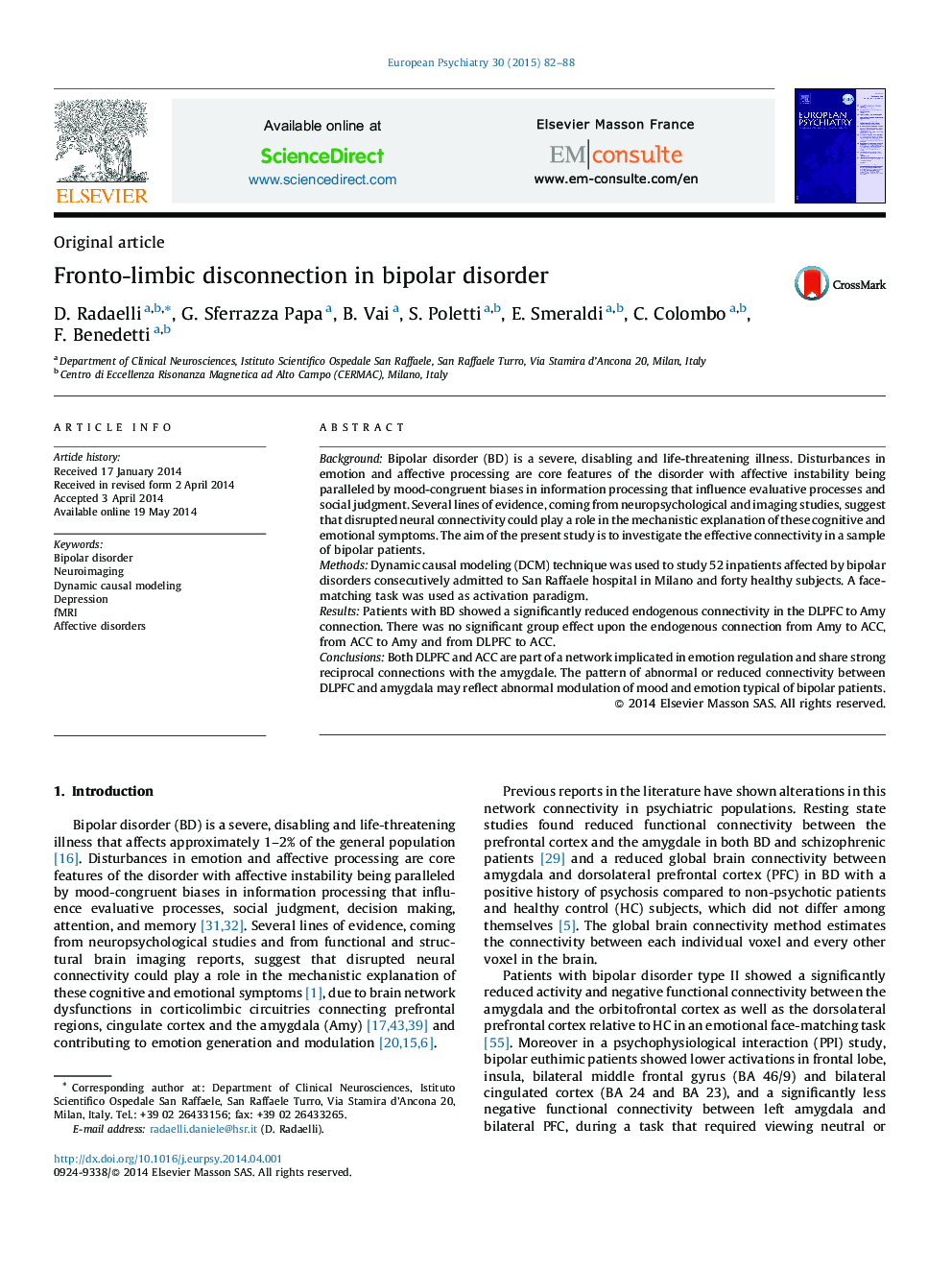| Article ID | Journal | Published Year | Pages | File Type |
|---|---|---|---|---|
| 4184043 | European Psychiatry | 2015 | 7 Pages |
BackgroundBipolar disorder (BD) is a severe, disabling and life-threatening illness. Disturbances in emotion and affective processing are core features of the disorder with affective instability being paralleled by mood-congruent biases in information processing that influence evaluative processes and social judgment. Several lines of evidence, coming from neuropsychological and imaging studies, suggest that disrupted neural connectivity could play a role in the mechanistic explanation of these cognitive and emotional symptoms. The aim of the present study is to investigate the effective connectivity in a sample of bipolar patients.MethodsDynamic causal modeling (DCM) technique was used to study 52 inpatients affected by bipolar disorders consecutively admitted to San Raffaele hospital in Milano and forty healthy subjects. A face-matching task was used as activation paradigm.ResultsPatients with BD showed a significantly reduced endogenous connectivity in the DLPFC to Amy connection. There was no significant group effect upon the endogenous connection from Amy to ACC, from ACC to Amy and from DLPFC to ACC.ConclusionsBoth DLPFC and ACC are part of a network implicated in emotion regulation and share strong reciprocal connections with the amygdale. The pattern of abnormal or reduced connectivity between DLPFC and amygdala may reflect abnormal modulation of mood and emotion typical of bipolar patients.
